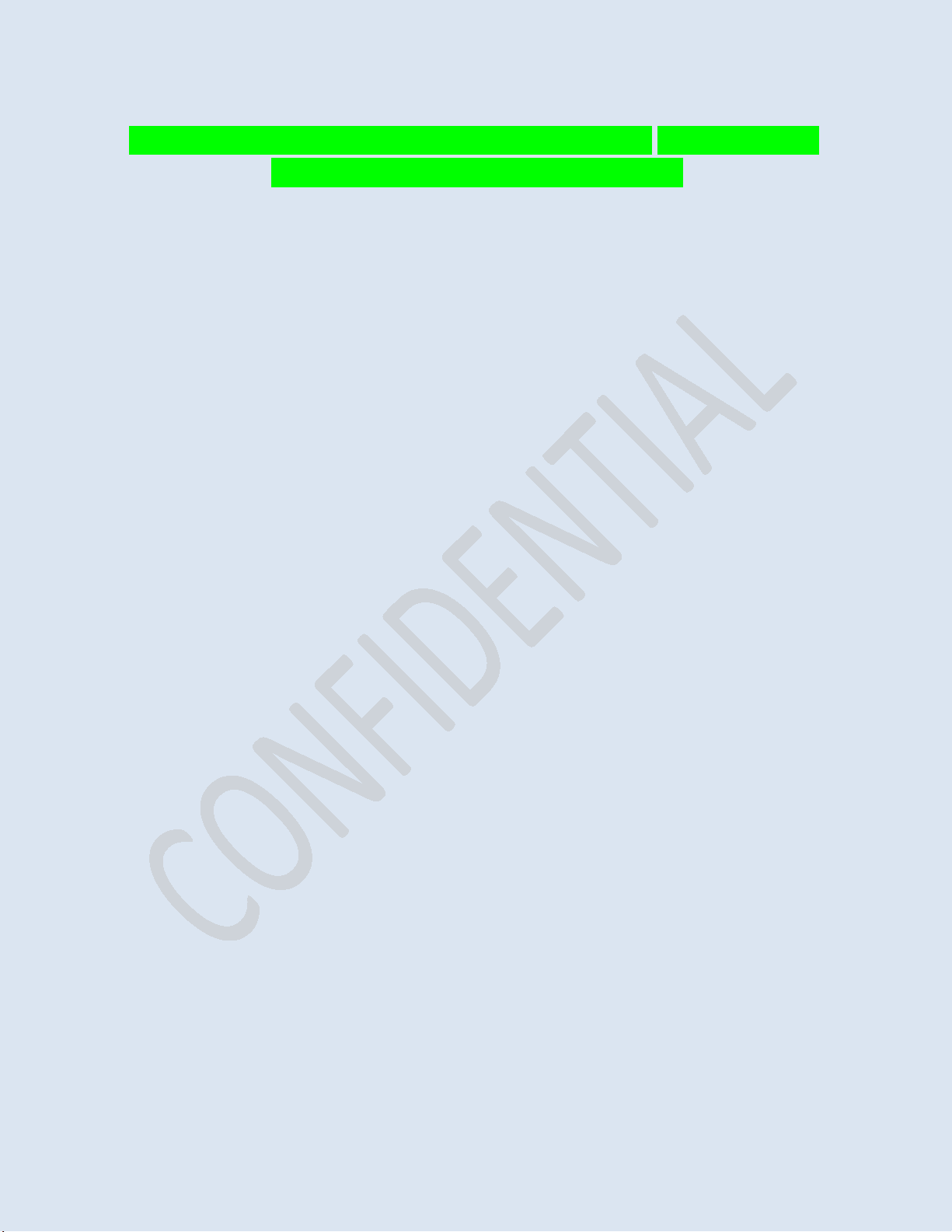
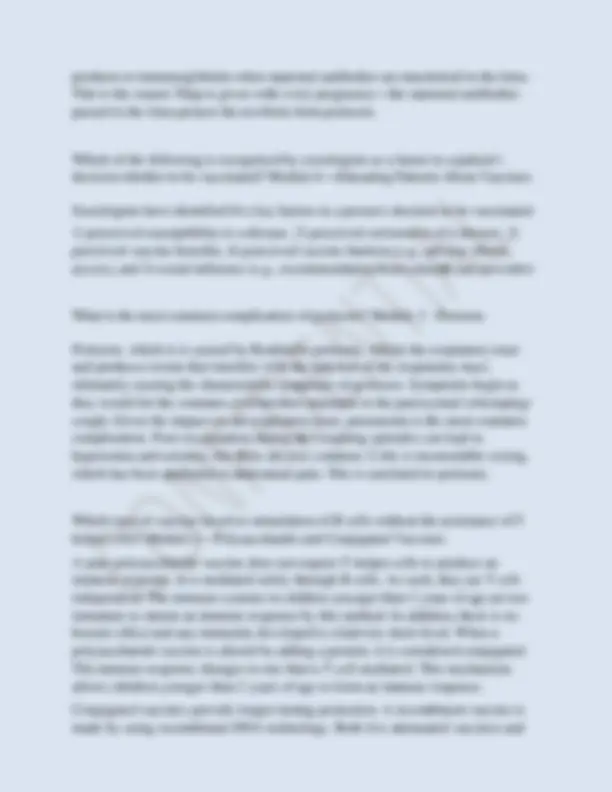
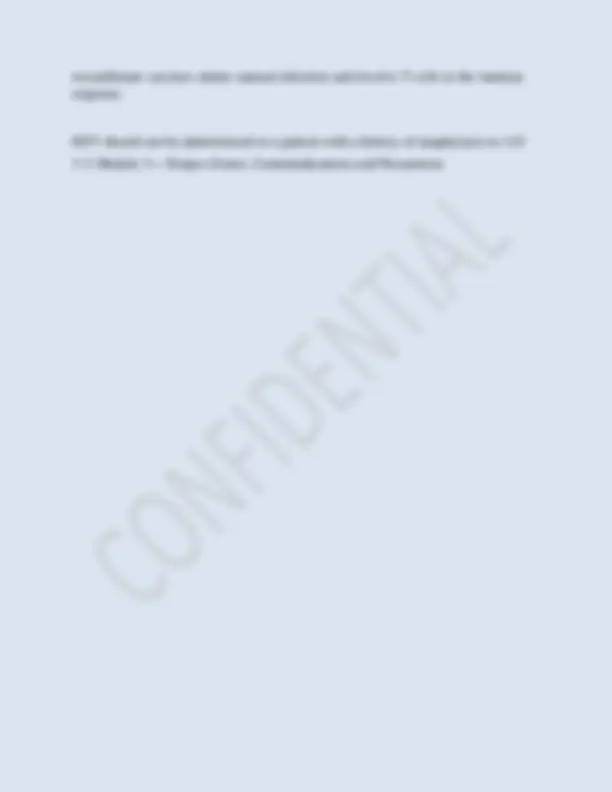
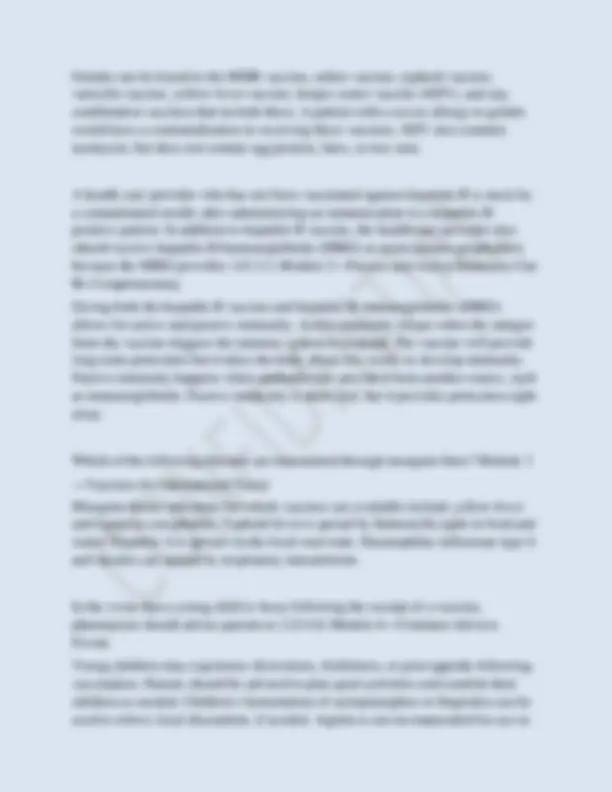
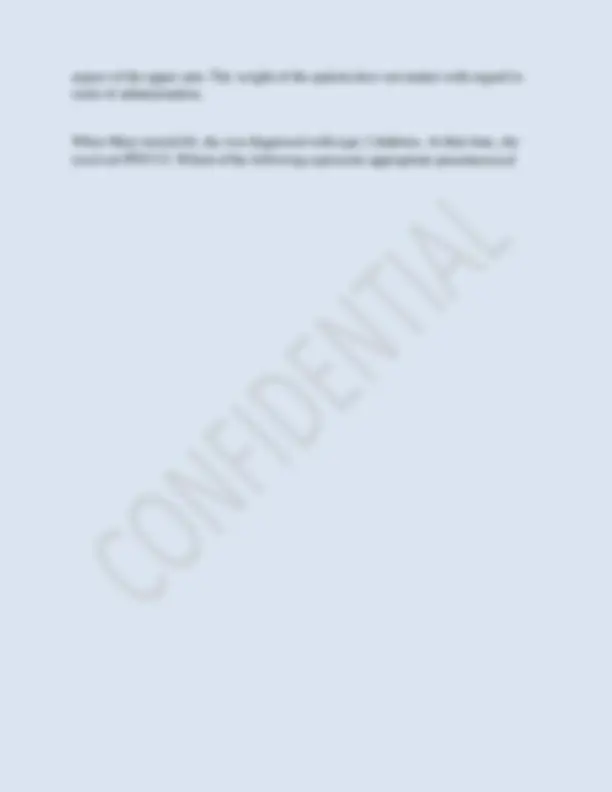
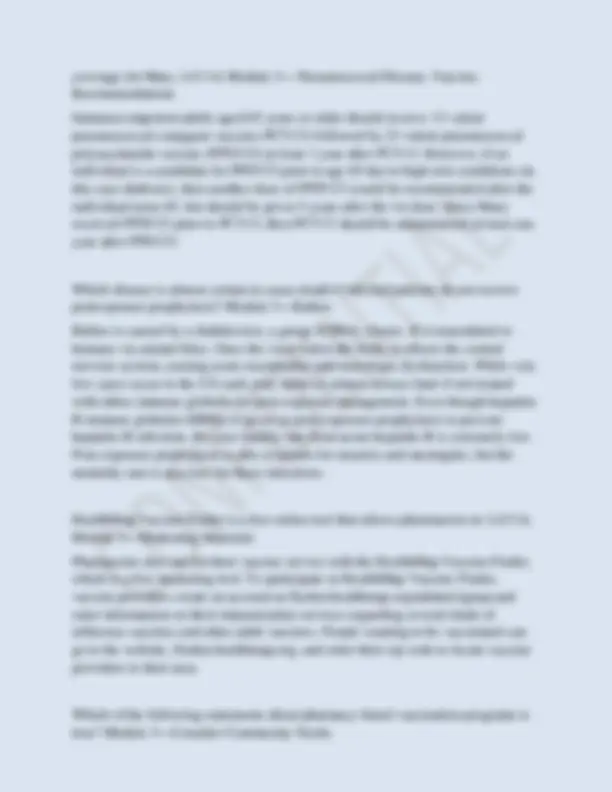
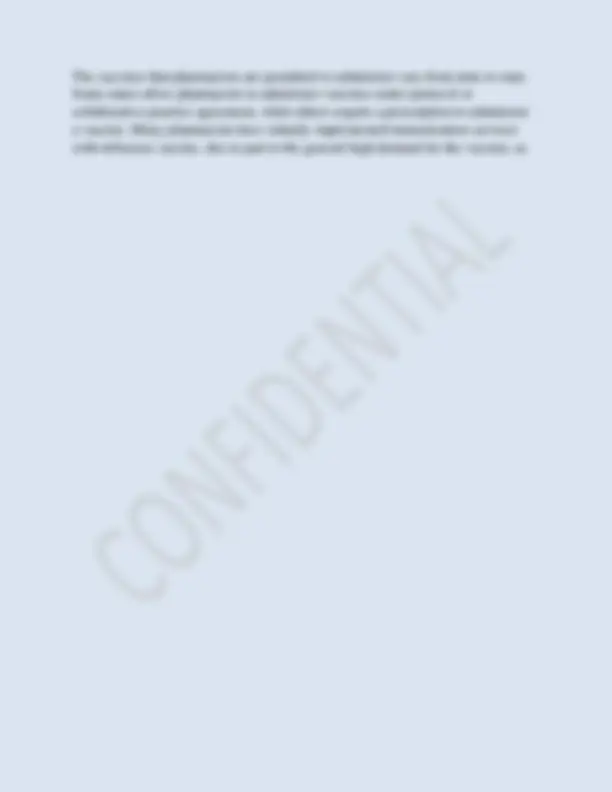
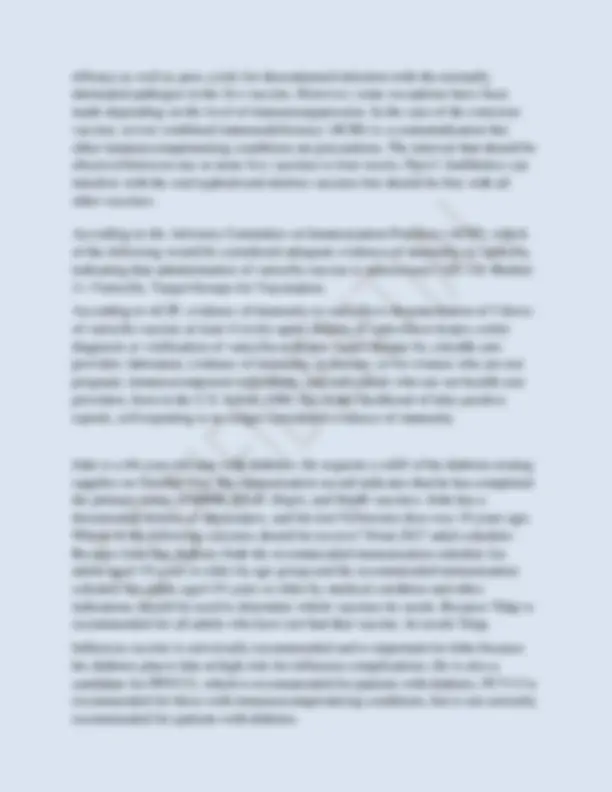
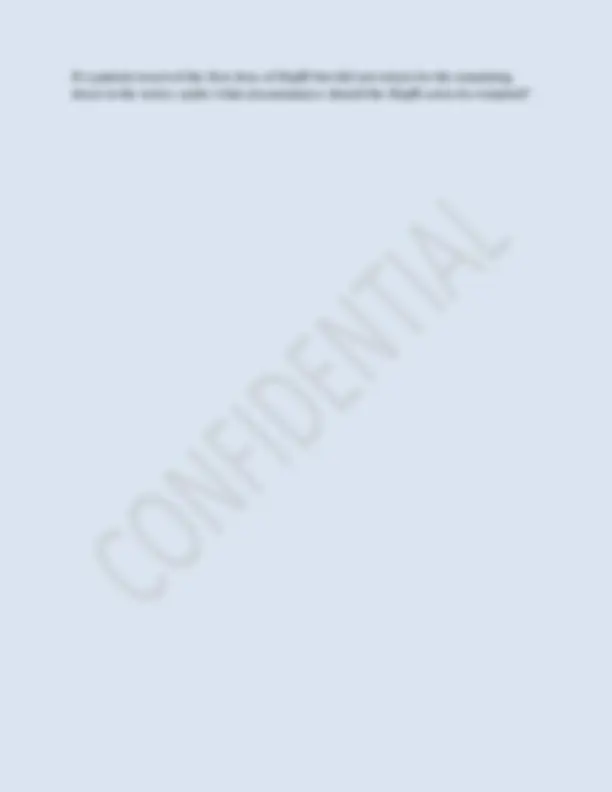
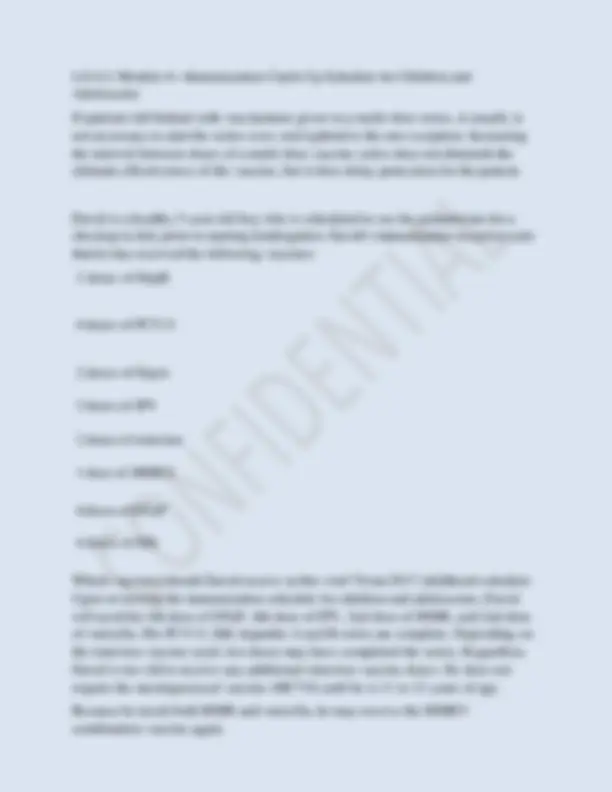
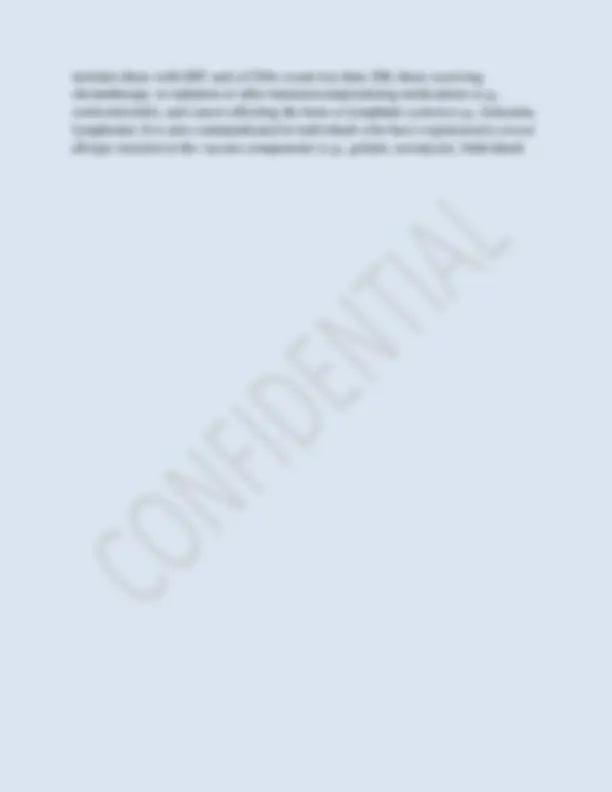
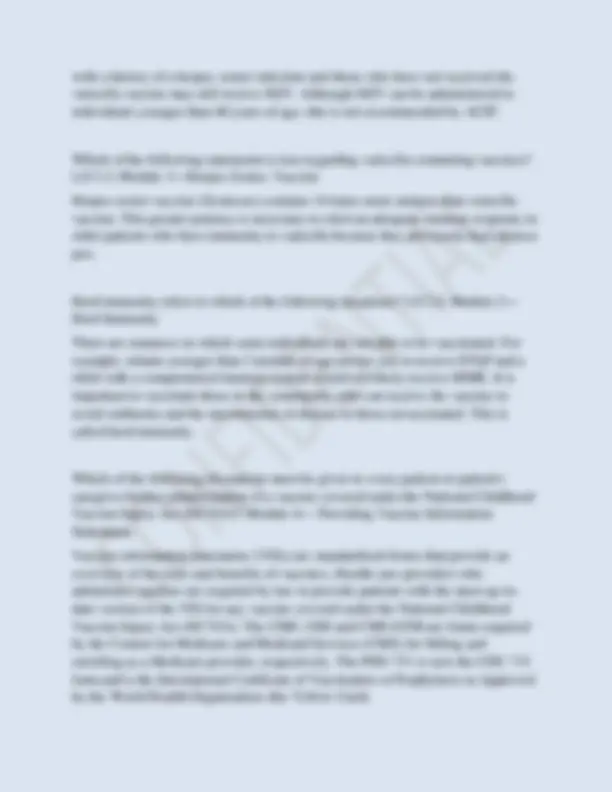
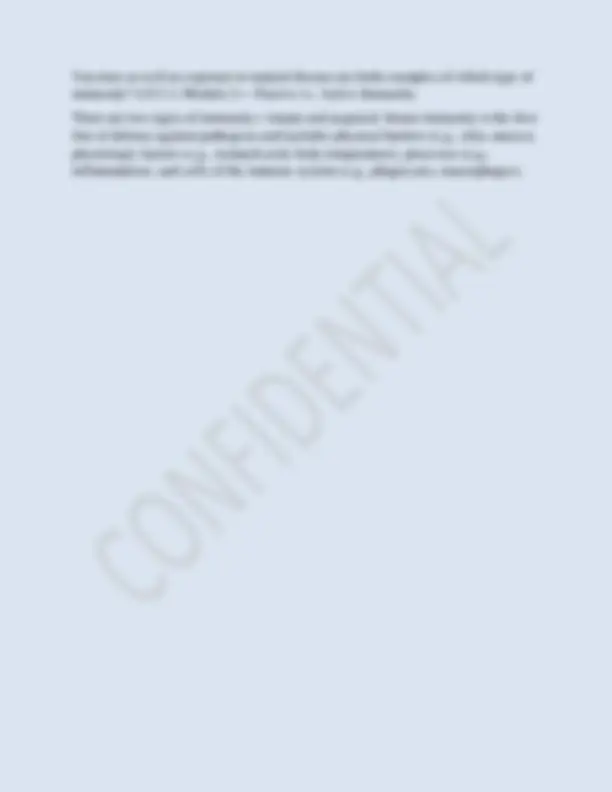
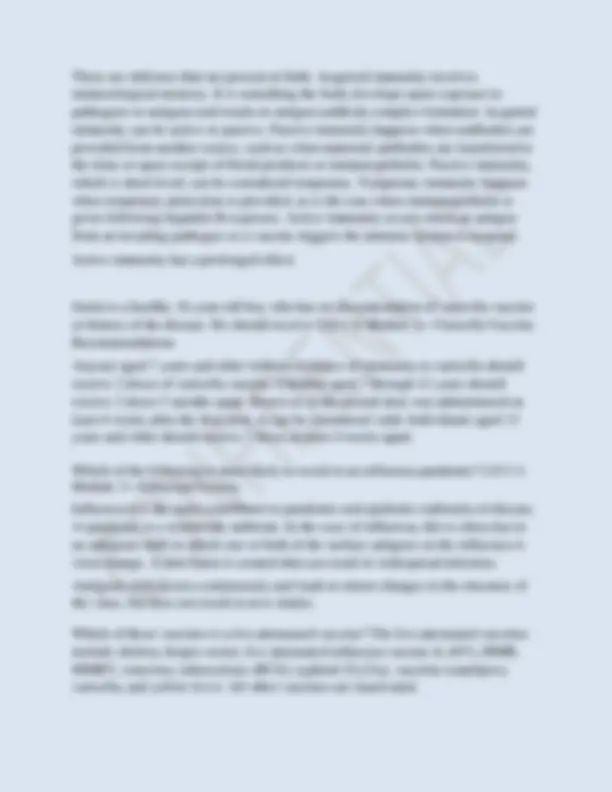

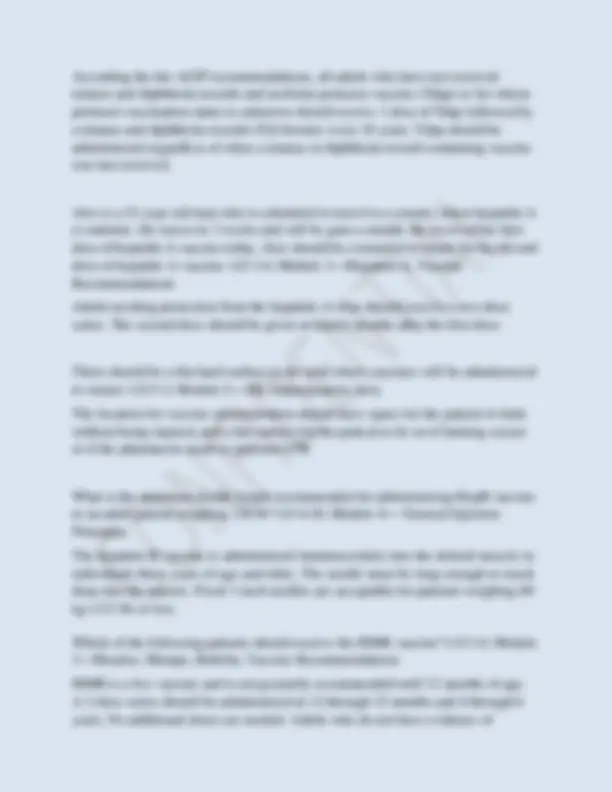
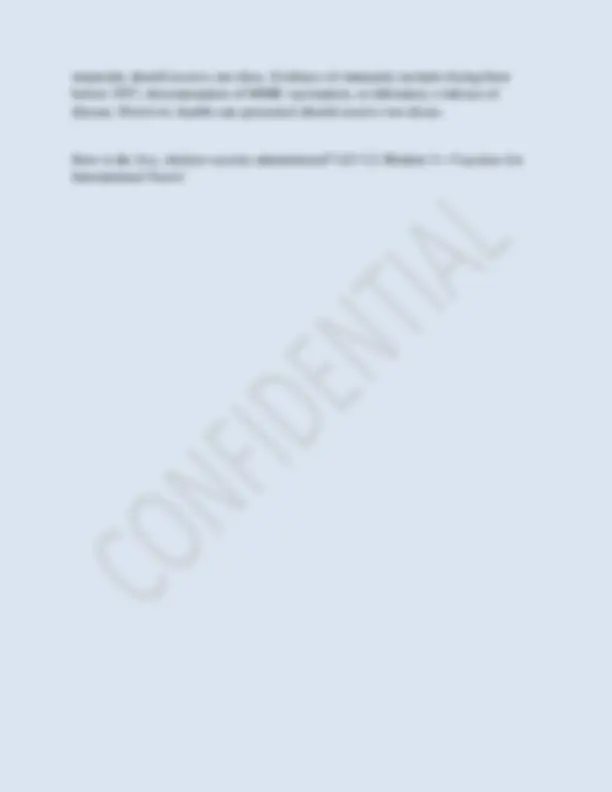
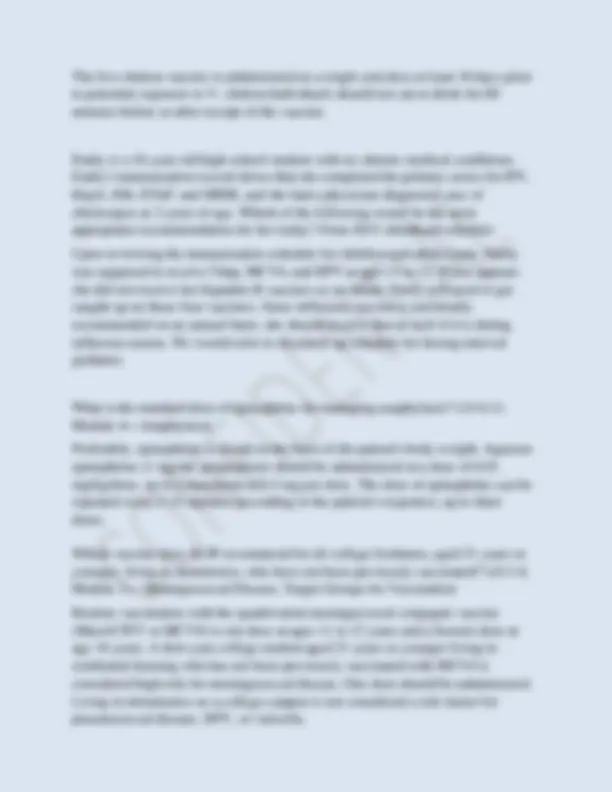
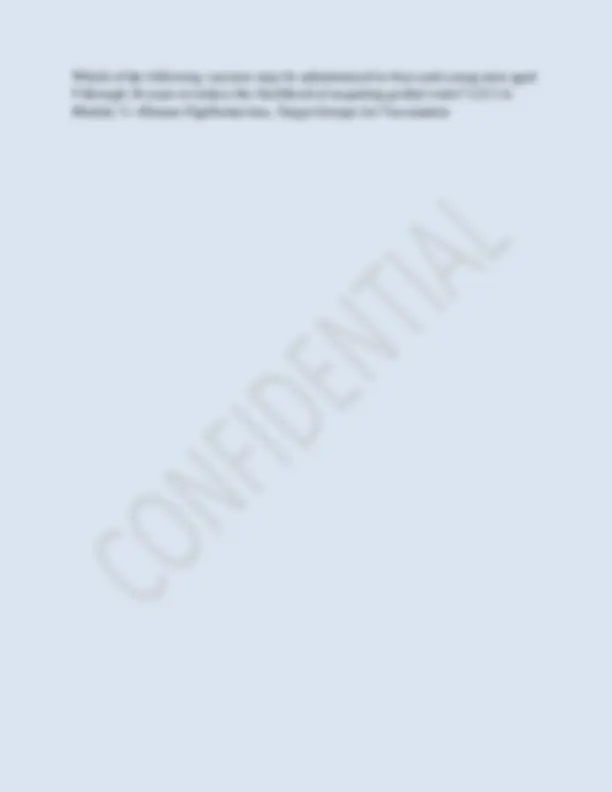
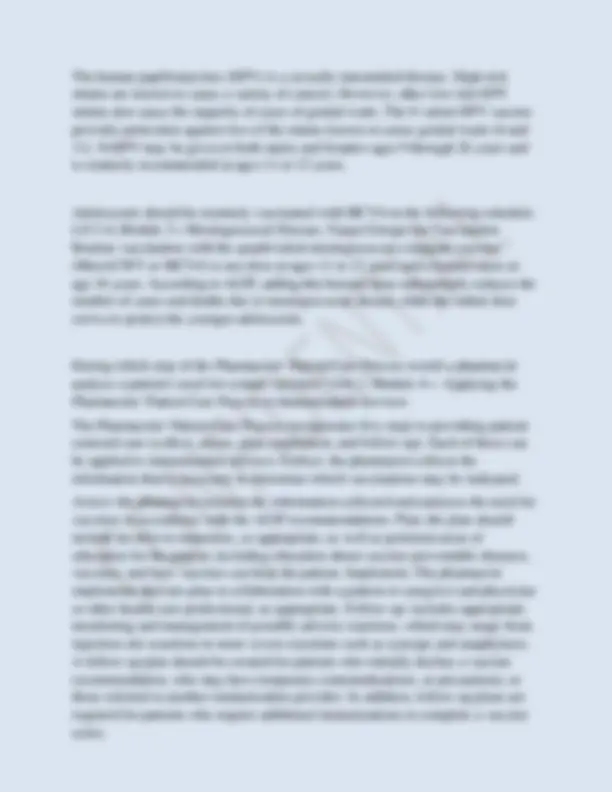
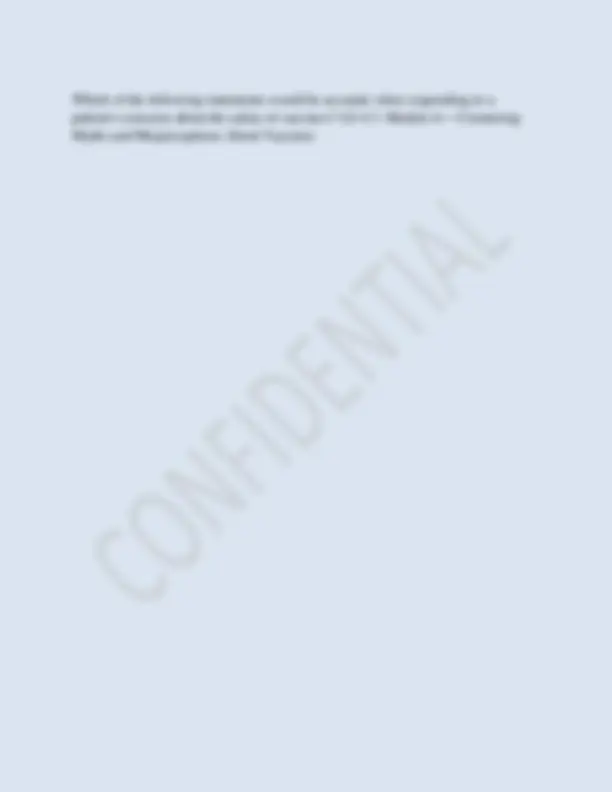
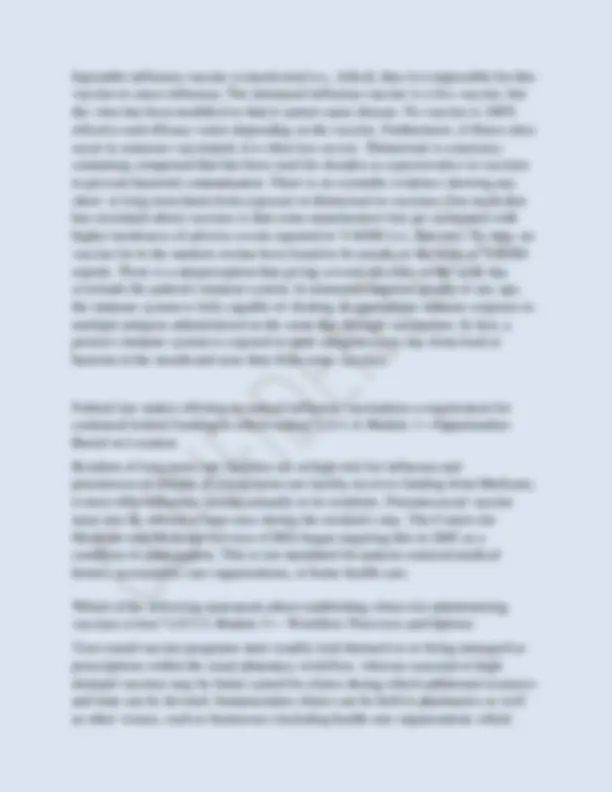
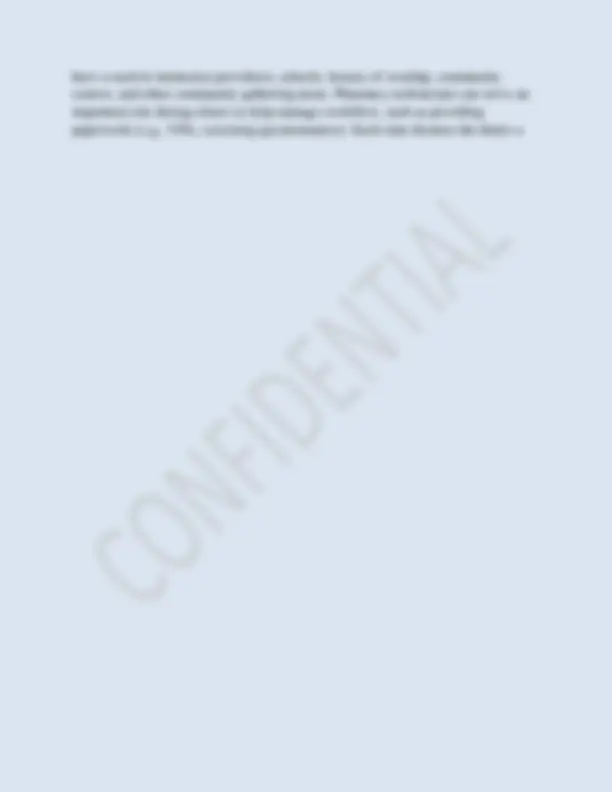
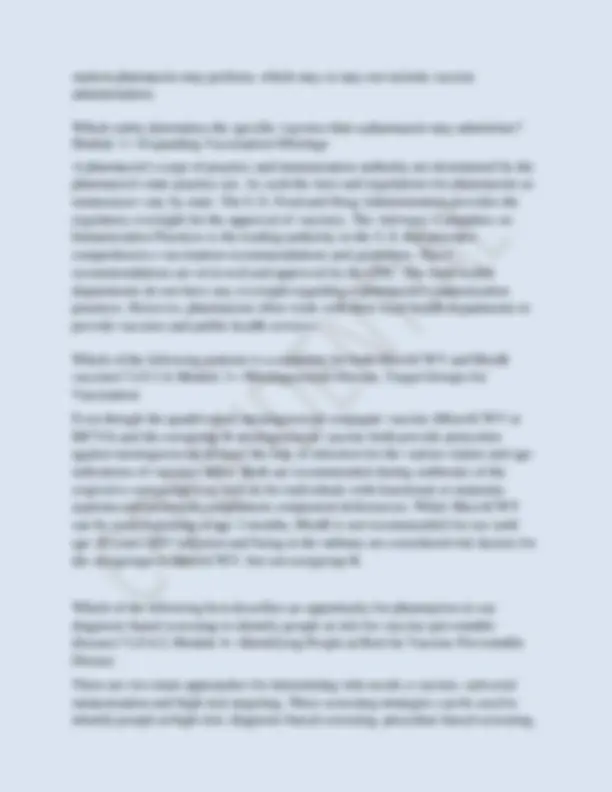
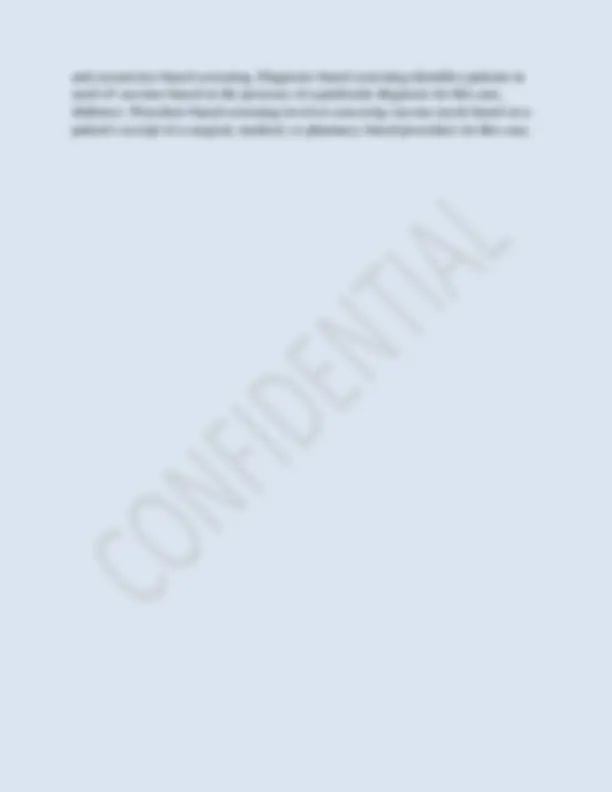
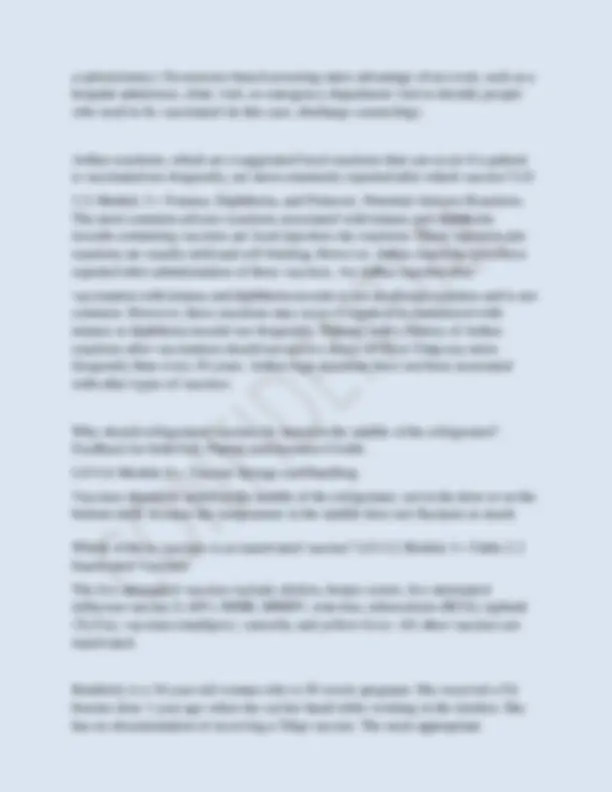
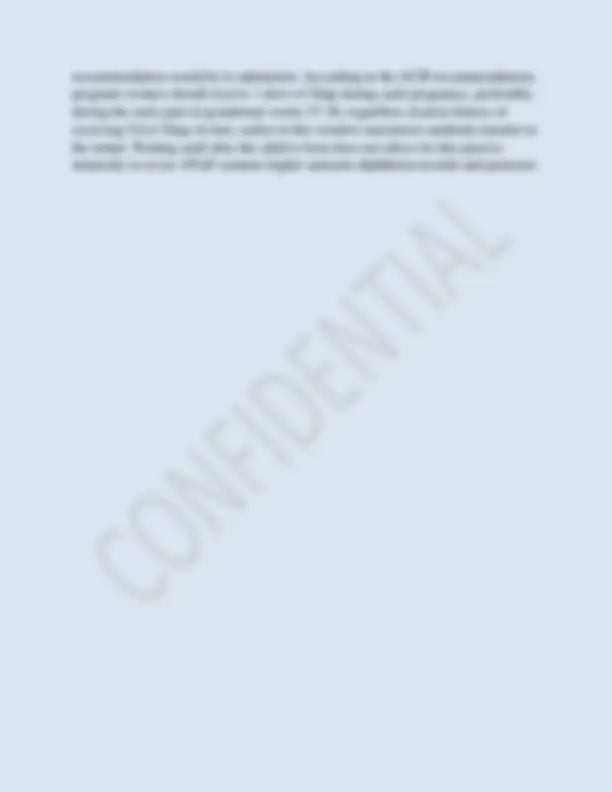
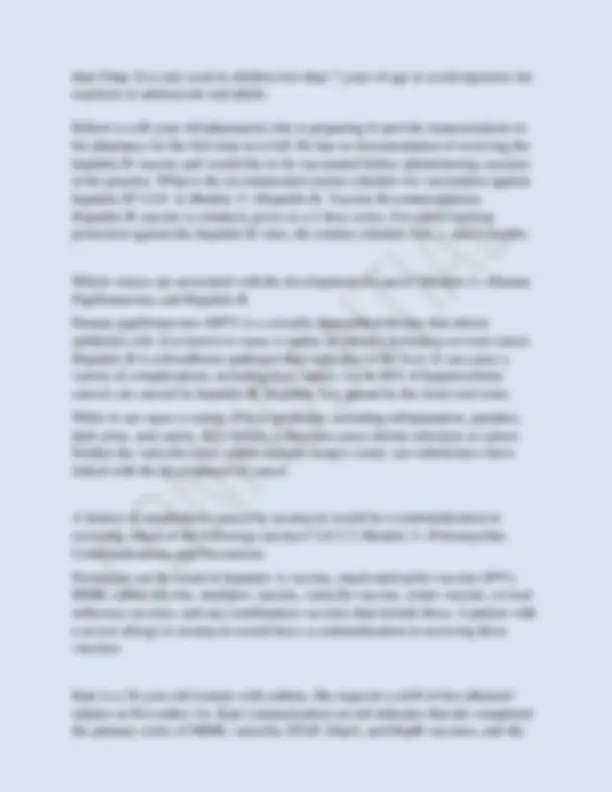
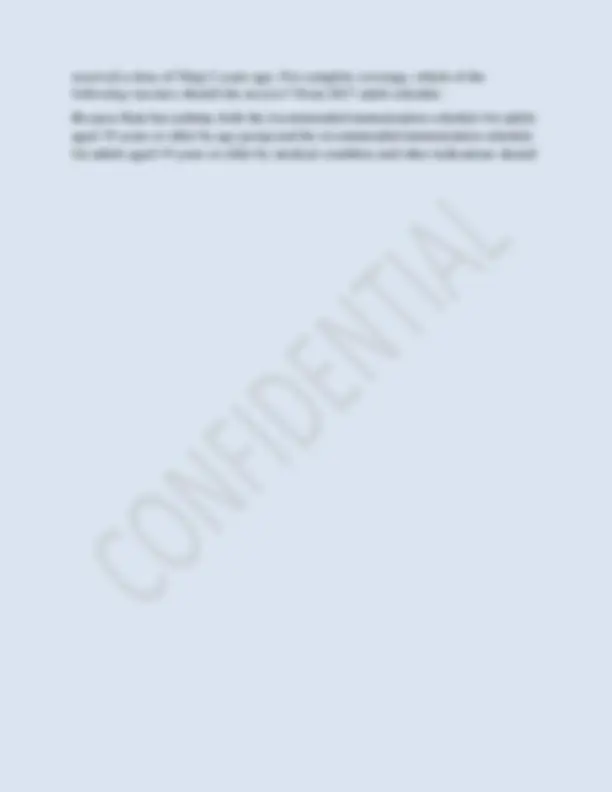
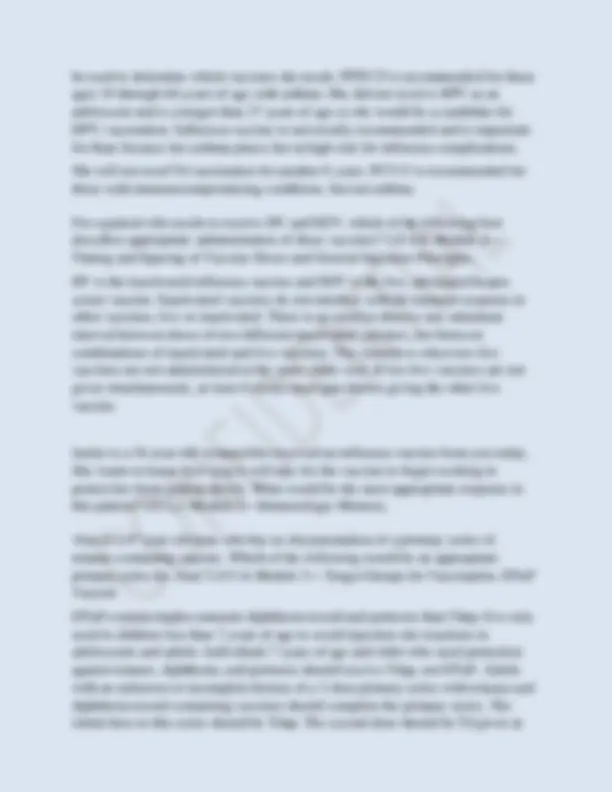
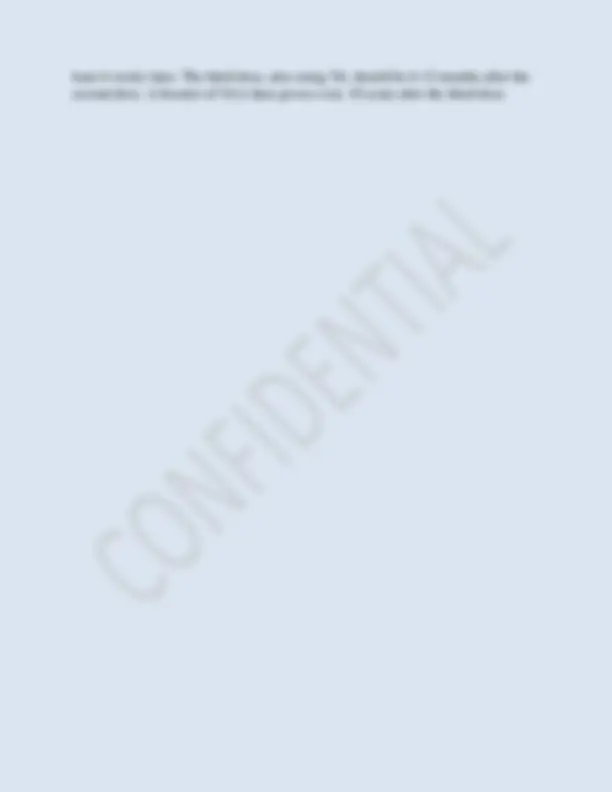
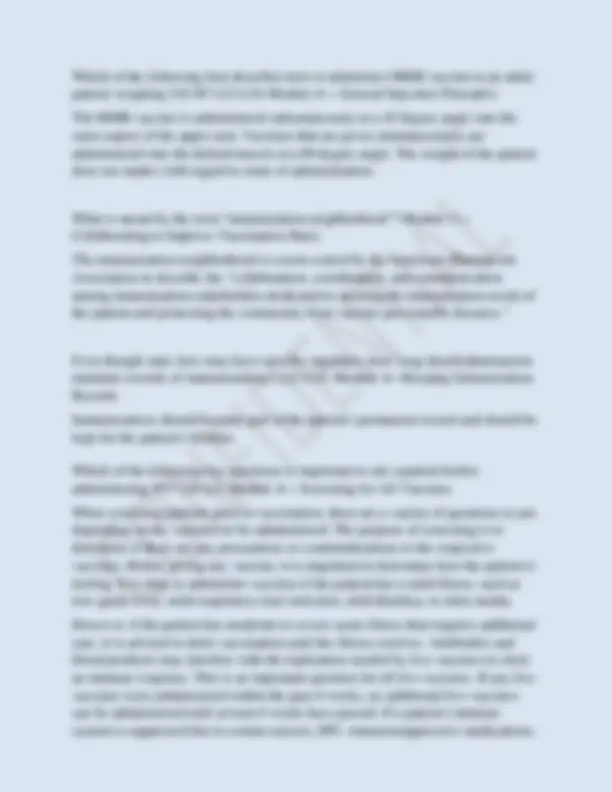
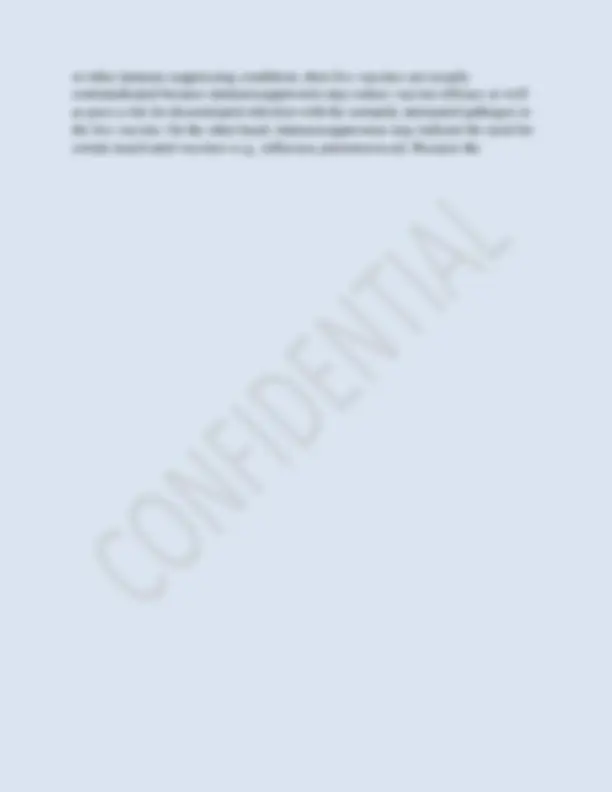
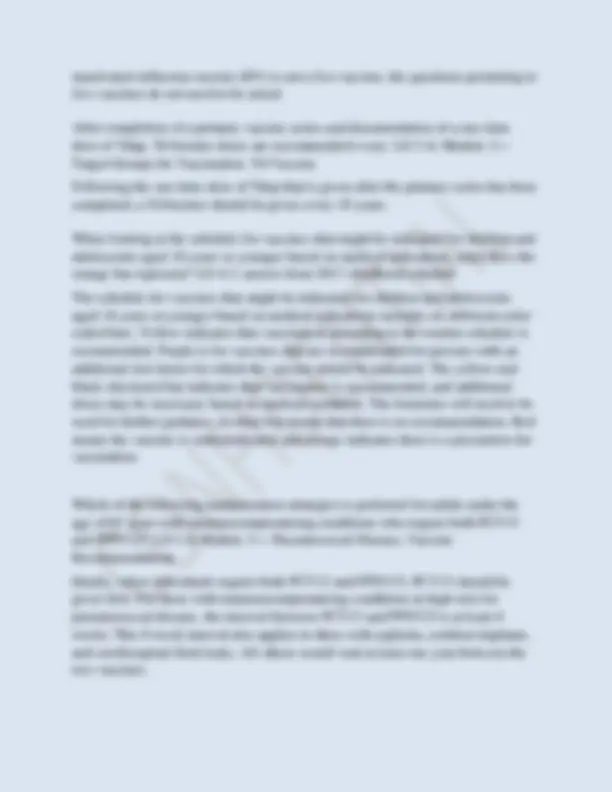
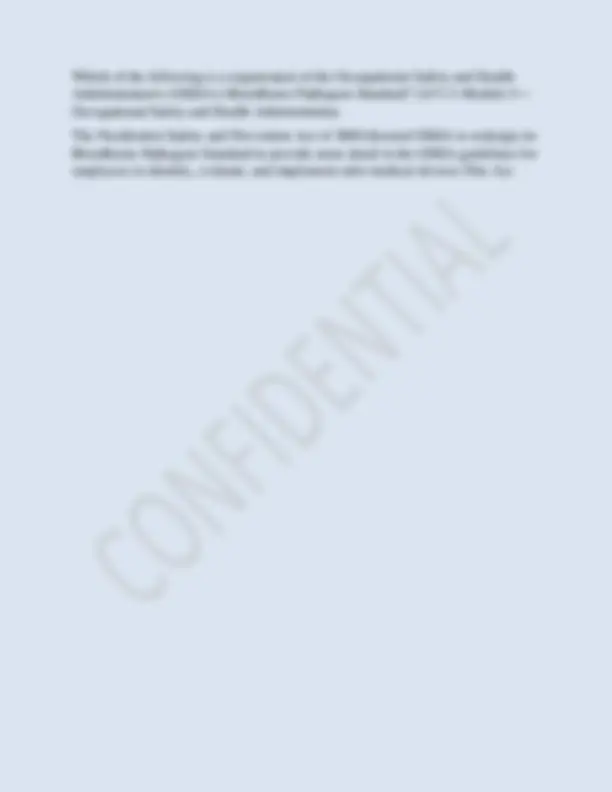
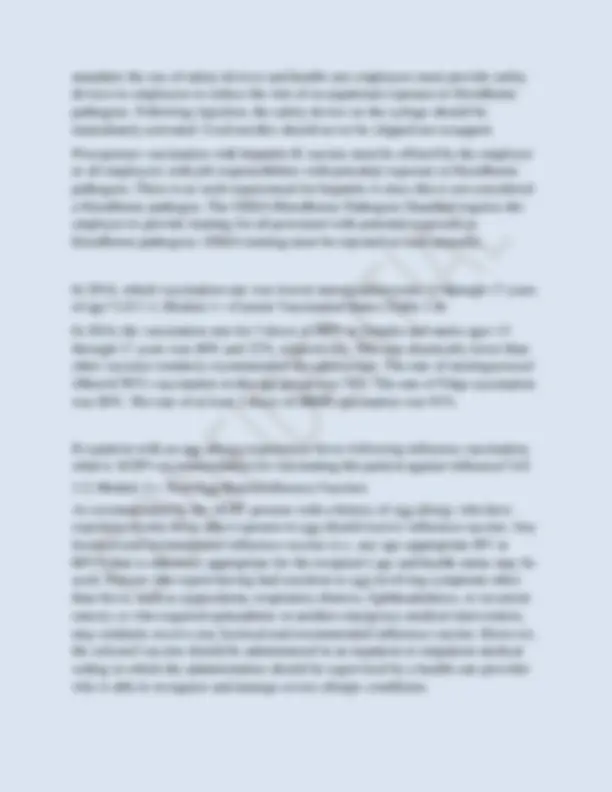
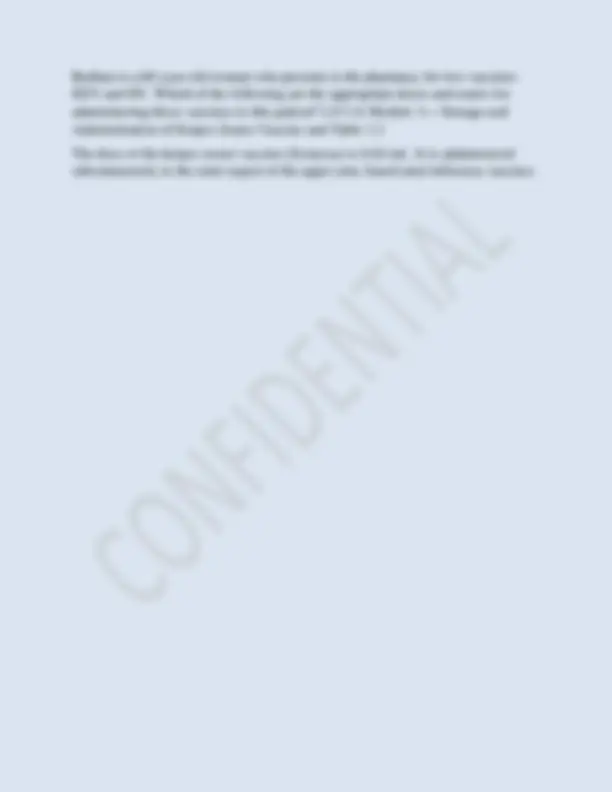
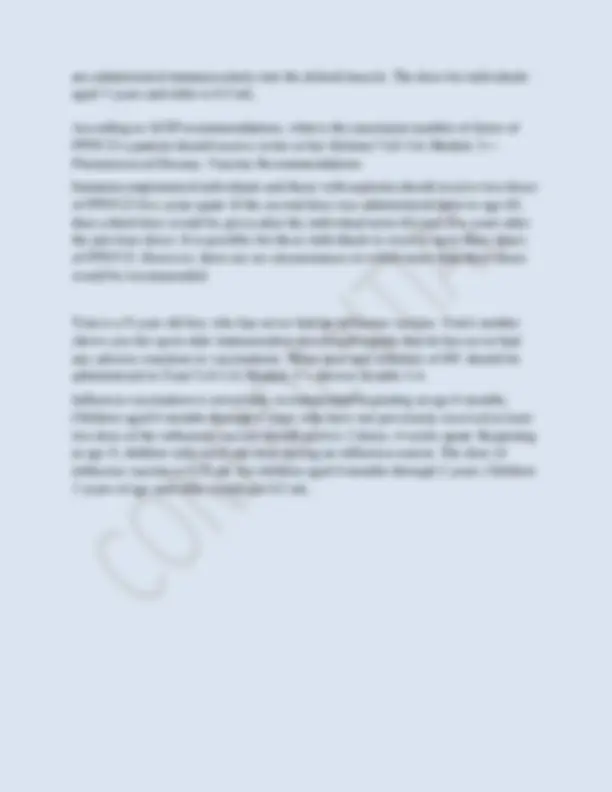


Study with the several resources on Docsity

Earn points by helping other students or get them with a premium plan


Prepare for your exams
Study with the several resources on Docsity

Earn points to download
Earn points by helping other students or get them with a premium plan
Community
Ask the community for help and clear up your study doubts
Discover the best universities in your country according to Docsity users
Free resources
Download our free guides on studying techniques, anxiety management strategies, and thesis advice from Docsity tutors
A comprehensive self-study evaluation on immunization, covering key aspects such as vaccine storage, handling, types of immunity, patient education, and vaccine administration. It includes questions and detailed explanations related to vaccine-preventable diseases, contraindications, and adverse events. The material is designed to enhance understanding of immunization principles and best practices for healthcare professionals. It addresses common complications, vaccine types, and proper administration techniques, making it a valuable resource for students and practitioners in medicine and pharmacy. Useful for university students, lifelong learners, and healthcare professionals seeking to deepen their knowledge of immunization practices. It covers topics such as vaccine storage, handling, types of immunity, patient education, and vaccine administration.
Typology: Exams
1 / 45

This page cannot be seen from the preview
Don't miss anything!






































If a vial of influenza vaccine is left out of the refrigerator on the pharmacy counter overnight, what should be done with the vaccine? LO 5.4; Module 5— Vaccine Storage and Handling.
If a vaccine has been exposed to temperatures outside the recommended range, the vaccine should be quarantined and stored in the refrigerator or freezer (as appropriate based on where the vaccine should usually be stored). In the case, the IIV should be placed back in the refrigerator. This quarantined vaccine should be clearly marked "do not use" and the manufacturer should be contacted for further guidance. Pharmacists should document each of these steps any time there is a break in the cold chain.
The presence of fever, diffuse maculopapular rash, and Koplik spots are characteristic of which of the following diseases? Module 3—Measles, Mumps, Rubella. Measles
The classic symptoms of measles include fever, cough, coryza (runny nose), conjunctivitis, Koplik spots (a bluish-white rash on mucous membranes, especially the mouth), followed by the development of a maculopapular rash approximately 14 days after exposure. Individuals infected with mumps may not have symptoms. Others may have nonspecific symptoms, such as headache, fever, myalgia, and malaise. About 30% to 40% of individuals may experience inflammation of the parotid glands. Rubella symptoms tend to be relatively mild and may present as a maculopapular rash that occurs approximately 14 days after exposure. Others may experience arthritis and arthralgia. Varicella presents as a generalized vesicular rash.
What is the type of immunity that occurs when a pregnant woman is vaccinated with Tdap to protect the infant from pertussis after birth? LO2. 1; Module 2— Passive vs. Active Immunity
Acquired immunity involves immunological memory. It is something the body develops upon exposure to pathogens or antigens and results in antigen-antibody complex formation. Cell-mediated immunity is a component of acquired immunity
and destroys pathogens that have entered cells. Acquired immunity can be active or passive. Active immunity occurs when an antigen from an invading pathogen or a vaccine triggers the immune system to respond. Passive immunity happens when antibodies are provided from another source, such as or upon receipt of blood
recombinant vaccines mimic natural infection and involve T cells in the immune response.
HZV should not be administered to a patient with a history of anaphylaxis to: LO
3.3; Module 3— Herpes Zoster, Contraindications and Precautions
Gelatin can be found in the MMR vaccine, rabies vaccine, typhoid vaccine, varicella vaccine, yellow fever vaccine, herpes zoster vaccine (HZV), and any combination vaccines that include these. A patient with a severe allergy to gelatin would have a contraindication to receiving these vaccines. HZV also contains neomycin, but does not contain egg protein, latex, or tree nuts.
A health care provider who has not been vaccinated against hepatitis B is stuck by a contaminated needle after administering an immunization to a hepatitis B- positive patient. In addition to hepatitis B vaccine, the health care provider also should receive hepatitis B Immunoglobulin (HBIG) as postexposure prophylaxis because the HBIG provides: LO 2.1; Module 2—Passive and Active Immunity Can Be Complementary
Giving both the hepatitis B vaccine and hepatitis B immunoglobulin (HBIG) allows for active and passive immunity. Active immunity occurs when the antigen from the vaccine triggers the immune system to respond. The vaccine will provide long-term protection but it takes the body about two weeks to develop immunity. Passive immunity happens when antibodies are provided from another source, such as immunoglobulin. Passive immunity is short-live, but it provides protection right away.
Which of the following diseases are transmitted through mosquito bites? Module 3
—Vaccines for International Travel
Mosquito-borne infections for which vaccines are available include yellow fever and Japanese encephalitis. Typhoid fever is spread by Salmonella typhi in food and water. Hepatitis A is spread via the fecal-oral route. Haemophilus influenzae type b and measles are spread by respiratory transmission.
In the event that a young child is fussy following the receipt of a vaccine, pharmacists should advise parents to: LO 4.8; Module 4—Common Adverse Events
Young children may experience drowsiness, fretfulness, or poor appetite following vaccination. Parents should be advised to plan quiet activities and comfort their children as needed. Children's formulations of acetaminophen or ibuprofen can be used to relieve local discomfort, if needed. Aspirin is not recommended for use in
There are two live, oral vaccines available to prevent rotavirus. However, the dosing differs between the two. RotaTeq (RV5) is administered orally in a 3-dose series, with doses administered at ages 2, 4, and 6 months. Rotarix (RV1) is administered orally in a 2-dose series, with doses administered at ages 2 and 4 months.
Which disease is characterized by the development of a membrane on the tonsils, pharynx, or larynx, leading to respiratory obstruction? Module 3—Diphtheria Diphtheria is caused by Corynebacterium diphtheriae, which enters the body through the respiratory tract. C. diphtheriae can infect any mucous membrane in the body, with the most common sites being the tonsils, pharynx, larynx, and nasal mucosa. The infection can cause tissue destruction and usually results in the formation of a pseudomembrane, which is a characteristic sign of diphtheria infection. This bluish-white membrane develops on the tonsils and pharynx within 2 to 3 days. As the membrane extends into the airway, it can lead to respiratory obstruction. Bordetella pertussis, infects the respiratory tract and produces toxins that interfere with the function of the respiratory tract, ultimately causing the characteristic symptoms of pertussis. Symptoms begin as they would for the common cold but then transition to a paroxysmal (whooping) cough. Haemophilus influenza type b (Hib) is spread by respiratory transmission and most commonly causes pneumonia, bacteremia, and meningitis. Meningitis is an infection of the brain and spinal cord, which can lead to a variety of complications including brain damage and deafness.
Which of the following diseases has been successfully eradicated worldwide through vaccination efforts? LO 1.1; Module 1—Impact of Vaccines
In 1798, the smallpox vaccine became the first vaccine available to prevent disease. To date, smallpox has been completely eradicated and the vaccine is no longer routinely used. All other diseases for which vaccines are available still exist.
Which of the following best describes how to administer Tdap vaccine to an adult patient weighing 185 lb? LO 4.10; Module 4— General Injection Principles
The Tdap vaccine is administered intramuscularly into the deltoid muscle. Intramuscular injections should be administered at a 90 degree angle. Vaccines that are given subcutaneously are administered at a 45 degree angle into the outer
aspect of the upper arm. The weight of the patient does not matter with regard to route of administration.
When Mary turned 64, she was diagnosed with type 2 diabetes. At that time, she received PPSV23. Which of the following represents appropriate pneumococcal
The vaccines that pharmacists are permitted to administer vary from state to state. Some states allow pharmacists to administer vaccines under protocol or collaborative practice agreement, while others require a prescription to administer a vaccine. Many pharmacists have initially implemented immunization services with influenza vaccine, due in part to the general high demand for the vaccine, as
well as state laws that have supported this approach. Because pharmacists have the infrastructure to bill Medicare Part D prescription drug plans, it may be easier for them to offer these services for older patients and pharmacists could partner with other providers to increase immunization rates.
The childhood/adolescent and adult immunization schedules are updated and published annually during which months? LO 1.6; Module 1—Vaccine Recommendation Sources
The Advisory Committee on Immunization Practices (ACIP) meets at least three times a year to discuss vaccine recommendations and guidelines. Although new recommendations may result from these meetings, the comprehensive schedules for children, adolescents, and adults are published once per year. These are typically made available at the end of January or early February.
HPV vaccine is recommended for which of the following individuals? LO 3.4; Module 3—Human Papillomavirus, Vaccine Recommendations
According to ACIP, both males and females between ages 9 through 26 years may receive the HPV vaccine. It is routinely recommended at 11 or 12 years of age.
If a patient is a candidate for revaccination with PPSV23, what is the ACIP- recommended interval between doses of this vaccine? LO 3.4; Module 3— Pneumococcal Disease, Vaccine Recommendations
Individuals at high-risk for pneumococcal disease may require one to three doses of PPSV23, depending on age and condition. When multiple doses are required, the interval between doses should be 5 years. For example, individuals under the age of 65 who are immunocompromised or have asplenia should receive two doses of PPSV23 five years apart. If the second dose was administered prior to age 65, then a third dose would be given after the individual turns 65 (and five years after the previous dose).
Why are adjuvants added to vaccines? LO 2.2; Module 2—Vaccine Adjuvants When an adjuvant is added to a vaccine, this results in an inflammatory response. This, in turn, strengthens the response to the antigen and the immune response is much greater. For instance, adjuvants are added to recombinant vaccines. When used alone, recombinant vaccines evoke a weak immune response. When adjuvants are added, the immune response is strong.
efficacy as well as pose a risk for disseminated infection with the normally attenuated pathogen in the live vaccine. However, some exceptions have been made depending on the level of immunosuppression. In the case of the rotavirus vaccine, severe combined immunodeficiency (SCID) is a contraindication but other immunocompromising conditions are precautions. The interval that should be observed between one or more live vaccines is four weeks. Ppsv2 Antibiotics can interfere with the oral typhoid and cholera vaccines but should be fine with all other vaccines.
According to the Advisory Committee on Immunization Practices (ACIP), which of the following would be considered adequate evidence of immunity to varicella, indicating that administration of varicella vaccine is unnecessary? LO 3.4; Module 3 —Varicella. Target Groups for Vaccination.
According to ACIP, evidence of immunity to varicella is documentation of 2 doses of varicella vaccine at least 4 weeks apart; history of varicella or herpes zoster diagnosis or verification of varicella or herpes zoster disease by a health care provider; laboratory evidence of immunity or disease; or for women who are not pregnant, immunocompetent individuals, and individuals who are not health care providers, born in the U.S. before 1980. Given the likelihood of false positive reports, self-reporting is no longer considered evidence of immunity
John is a 46-year-old man with diabetes. He requests a refill of his diabetes testing supplies on October 21st. His immunization record indicates that he has completed the primary series of MMR, DTaP, HepA, and HepB vaccines. John has a documented history of chickenpox, and his last Td booster dose was 19 years ago. Which of the following vaccines should he receive? From 2017 adult schedule: Because John has diabetes both the recommended immunization schedule for adults aged 19 years or older by age group and the recommended immunization schedule for adults aged 19 years or older by medical condition and other indications should be used to determine which vaccines he needs. Because Tdap is recommended for all adults who have not had that vaccine, he needs Tdap.
Influenza vaccine is universally recommended and is important for John because his diabetes places him at high-risk for influenza complications. He is also a candidate for PPSV23, which is recommended for patients with diabetes. PCV13 is recommended for those with immunocompromising conditions, but is not currently recommended for patients with diabetes.
If a patient received the first dose of HepB but did not return for the remaining doses in the series, under what circumstances should the HepB series be restarted?
According to ACIP recommendations, HZV is indicated for the prevention of herpes zoster in adults aged: LO 3.2; Module 3—Herpes Zoster, Target Groups for Vaccination
Even though the herpes zoster vaccine (Zostavax) is FDA approved for individuals aged 50 and older, the ACIP recommends this vaccine for individuals aged 60 and older. There are concerns about waning immunity with this vaccine. If given too soon (before age 60), it may not afford protection in older individuals who are at higher risk of herpes zoster.
Aiden is a 6-month-old healthy boy with no known allergies. He has received vaccinations in the past with no reported adverse reactions. Aiden's father asks about having his son vaccinated against influenza. The most appropriate response would be to inform the father that Aiden: LO 3.2 & 3.4; Module 3—Influenza.
Vaccine Recommendations
Influenza vaccination is universally recommended beginning at age 6 months. Children aged 6 months through 8 years who have not previously received at least two dose of the influenza vaccine should receive 2 doses, 4 weeks apart. Children aged 6 months can be given either the trivalent or quadrivalent inactivated influenza vaccine (IIV3 or IIV4), so long as the age indications for the product are appropriate. It is not recommended that LAIV be used for the current influenza season. Furthermore, LAIV is approved for healthy individuals 2 through 49 years of age. Even if it was recommended, Aiden would be too young.
Prior to the introduction of a vaccine, what was the leading cause of bacterial meningitis in children younger than 5 years of age? Module 3—Haemophilus influenzae type b, Clinical Features and Potential Complications
H. influenzae type b (Hib) is an aerobic gram-negative coccobacillus spread by respiratory transmission from asymptomatic carriers.Before the availability of vaccines, Hib affected 1 of every 200 children in the United States, accounting for more than 20,000 cases each year.It was the leading cause of bacterial meningitis in children younger than 5 years of age. Hib vaccines have been highly effective— disease incidence was reduced from 20,000 cases in 1985 to 17 cases reported in
According to ACIP, which of the following is a contraindication to receiving HZV? LO 3.3, Herpes Zoster, Contraindications and Precautions
The herpes zoster vaccine (Zostavax) is a live vaccine. It is contraindicated in individuals who are pregnant and those with compromised immune systems. This
with a history of a herpes zoster infection and those who have not received the varicella vaccine may still receive HZV. Although HZV can be administered to individuals younger than 60 years of age, this is not recommended by ACIP.
Which of the following statements is true regarding varicella-containing vaccines? LO 3.2; Module 3—Herpes Zoster, Vaccine
Herpes zoster vaccine (Zostavax) contains 14 times more antigen than varicella vaccine. This greater potency is necessary to elicit an adequate immune response in older patients who have immunity to varicella because they previously had chicken pox.
Herd immunity refers to which of the following situations? LO 2.5; Module 2— Herd Immunity
There are instances in which some individuals are not able to be vaccinated. For example, infants younger than 2 months of age are too you to receive DTaP and a child with a compromised immune system would not likely receive MMR. It is important to vaccinate those in the community who can receive the vaccine to avoid outbreaks and the transmission of disease to those unvaccinated. This is called herd immunity.
Which of the following documents must be given to every patient or patient's caregiver before administration of a vaccine covered under the National Childhood Vaccine Injury Act (NCVIA)? Module 4— Providing Vaccine Information Statements
Vaccine information statemetns (VISs) are standardized forms that provide an overview of the risks and benefits of vaccines. Health care providers who administer vaccines are required by law to provide patients with the most up-to- date version of the VIS for any vaccine covered under the National Childhood Vaccine Injury Act (NCVIA). The CMS-1500 and CMS-855B are forms required by the Centers for Medicare and Medicaid Services (CMS) for billing and enrolling as a Medicare provider, respectively. The PHS-731 is now the CDC 731 form and is the International Certificate of Vaccination or Prophylaxis as Approved by the World Health Organization (the Yellow Card).
Vaccines as well as exposure to natural disease are both examples of which type of immunity? LO 2.1; Module 2— Passive vs. Active Immunity
There are two types of immunity—innate and acquired. Innate immunity is the first line of defense against pathogens and includes physical barriers (e.g., skin, mucus), physiologic factors (e.g., stomach acid, body temperature), processes (e.g., inflammation), and cells of the immune system (e.g., phagocytes, macrophages).